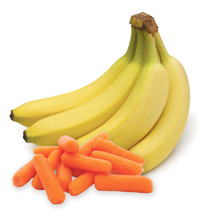by Evelyn J. Mocbeichel

It’s time for children to stop being stuck indoors sitting and looking at a computer screen like scores of them did for the last school year! Did you know that childhood obesity is the No. 1 health concern among parents in the United States, topping drug abuse & smoking? Among children today, obesity is causing a broad range of health problems that previously weren’t seen until adulthood. If current trends continue, today’s kids could be the first generation to live shorter lives than their parents. Parents & caregivers are essential decision makers when it comes to the nutrition, physical activity & health needs of their children. As a parent, you want the best for your child. Every parent does. And the American Heart Association can help your child develop healthy habits early in life that will bring lifelong benefits. As you gain practical tips on helping your kids eat nutritious meals and enjoy a physically active lifestyle, be sure to apply these same behaviors to your own life. The best way to lead your child to a healthy lifestyle is to set a positive example yourself. Find out how using some of the tips below and by visiting www.heart.org.
Healthy Habits: You can help your child develop healthy habits early in life that will bring lifelong benefits. As a parent, you can encourage your kids to evaluate their food choices and physical activity habits. After a healthy meal, plan to get the whole family moving together and out of the house! Take walks, ride bikes, go swimming, garden or just play hide-and-seek outside. Everyone will benefit from the exercise & the time together. Maybe take time to explore some of the parks or nature trails in or near your town that you’ve never visited before. Limit TV, video game and computer time, too. These habits lead to a sedentary lifestyle & excessive snacking, which increase risks for obesity and cardiovascular disease. Limit screen time to 2 hours per day.
 Snack Item Choices: Try some of these healthy foods to keep your family on track while sticking to your budget. Eat more bananas and use them for snacks, fruit salads, yogurt parfaits, and smoothies. What’s a serving? One large banana equals about 121 calories, 3.5 grams fiber, 14% Daily Value for potassium (487 mg) and 20% daily value for vitamin C. Baby carrots are also great snacks and can be used to dip into peanut butter, in casseroles, stews, veggie platters, and side dishes. What’s a serving? About 1/2 cup or 2 ounces raw about 2 ounces is about 21 calories, 2 grams of fiber, and 166% Daily Value for vitamin A.
Snack Item Choices: Try some of these healthy foods to keep your family on track while sticking to your budget. Eat more bananas and use them for snacks, fruit salads, yogurt parfaits, and smoothies. What’s a serving? One large banana equals about 121 calories, 3.5 grams fiber, 14% Daily Value for potassium (487 mg) and 20% daily value for vitamin C. Baby carrots are also great snacks and can be used to dip into peanut butter, in casseroles, stews, veggie platters, and side dishes. What’s a serving? About 1/2 cup or 2 ounces raw about 2 ounces is about 21 calories, 2 grams of fiber, and 166% Daily Value for vitamin A.
Get Non-Athletes to be Active: Team sports are a great way for kids to get their daily activity requirement, but competitive sports aren’t for everyone. Here are some ways to encourage your “non-athlete” to get up and get moving. Find an activity they love. Some kids just don’t like competing in sports. That’s OK; there are lots of other ways to be active! Try swimming, horseback riding, dancing, cycling, skateboarding, yoga, walking or jumping rope. Encourage your child to explore multiple activities to find one they really enjoy. This summer look for minicamp experiences that may only be a week or two in length, just enough exposure for a child to see if they truly enjoy the sport enough to continue it later on.

